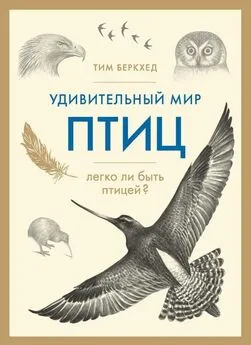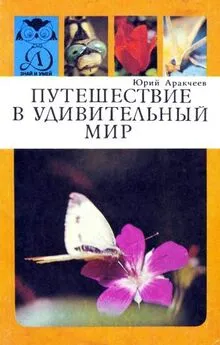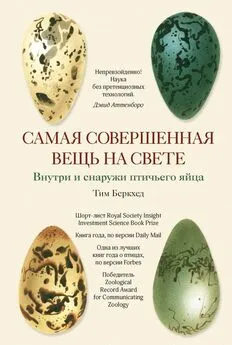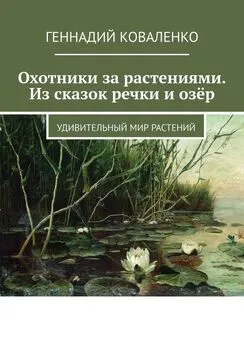Тим Беркхед - Удивительный мир птиц. Легко ли быть птицей?
- Название:Удивительный мир птиц. Легко ли быть птицей?
- Автор:
- Жанр:
- Издательство:Литагент Аттикус
- Год:2019
- Город:Москва
- ISBN:978-5-389-17468-9
- Рейтинг:
- Избранное:Добавить в избранное
-
Отзывы:
-
Ваша оценка:
Тим Беркхед - Удивительный мир птиц. Легко ли быть птицей? краткое содержание
«Я попытался подвести итог тому, что мы знаем в настоящее время, и вместе с тем – тому, чего мы еще не знаем о чувствах птиц. Наши представления о сенсорных системах человека развиваются не по дням, а по часам, и если история что-нибудь да значит – а я в этом уверен, – тогда открытия, связанные с чувствами людей, неизбежно позволят нам предпринять подобные исследования для птиц. Кроме того, история со всей наглядностью свидетельствует, что наши открытия, относящиеся к птицам (и к другим животным), имеют колоссальное значение и для людей». (Тим Беркхед)
Удивительный мир птиц. Легко ли быть птицей? - читать онлайн бесплатно ознакомительный отрывок
Интервал:
Закладка:
Piersma T., van Aelst R., Kurk K., Berkhoudt H., Mass L. R. M. A new pressure sensory mechanism for prey detection in birds: the use of principles of seabed dynamics? // Proc. R. Soc. Lond. B. 1998. 265. P. 1377–1383.
Pizzari T., Cornwallis C. K., Lovlie H., Jakobsson S., Birkhead T. R . Sophisticated sperm allocation in male fowl // Nature. 2003. 426. P. 70–74.
Pumphrey R. J. The sense organs of birds // The Ibis. 1948. 90. P. 171–199.
Radford A. N . Duration and outcome of intergroup conflict influences intragroup affiliative behavior // Proc. R. Soc. Lond. B. 2008. 275. P. 2787–2791.
Rattenborg N. C., Amlaner C. J., Lima S. L. Behavioral neurophysiological and evolutionary perspectives on unihemispheric sleep // Neuroscience and Biobehavioural Reviews. 2000. 24. P. 817–842.
Rattenborg N. C., Lima S. L., Amlaner C. J. Facultative control of avian unihemispheric sleep under the risk of predation // Behavioural Brain Research. 1999. 105. P. 163–172.
Ray J. The Ornithology of Francis Willughby. L.: John Martyn, 1678.
Rennie J. The Faculties of Birds. L.: Charles Knight, 1835.
Rensch B., Neunzig R . Experimentelle Untersuchungen über den Geschmackssinn der Vögel II // Journal of Ornithology. 1925. 73. P. 633–646.
Ritz T., Adem S., Schulten K. A model for vision-based magnetoreception in birds // Biophysical Journal. 2000. 78. P. 707–718.
Rochon-Duvigneaud A. Les yeux et la vision des Vertébrés. Paris: Masson, 1943.
Rogers L. J. Light experience and asymmetry of brain function in chickens // Nature. 1982. 297. P. 223–225.
Rogers L. J. Development and function of lateralization in the avian brain // Brain Research Bulletin. 2008. 76. P. 235–244.
Rogers L. J., Zucca P., Vallortigara G . Advantages of having a lateralized brain // Proc. R. Soc. Lond. B. 2004. 271. S 420–S 422.
Rolls E. T . Emotions Explained. Oxford: Oxford University Press, 2005.
Rosenblum L. D. See What I’m Saying. N.Y.: Norton, 2010.
Ruestow E. G . The Microscope in the Dutch Republic. Cambridge: Cambridge University Press, 1996.
Sade J., Handrich Y., Bernheim J., Cohen D . Pressure equilibration in the penguin middle ear // Acta Oto-Laryngologica. 2008. 128. P. 18–21.
Sayle C. E . The Works of Sir Thomas Browne. Edinburgh: Grant, 1927.
Schickore J. The Microscope and the Eye: a History of Reflections, 1740–1870. Chicago, IL: University of Chicago Press, 2007.
Schlegel H., Wulvergorst A. H. V. Traité de Fauconnerie. Leiden: Arnz, 1844–1853.
Schuett G. W., Grober M. S . Post-fight levels of plasma lactate and corticisterone in male copperheads Agkistrodon contortrix (Serpentes, Viperidae): differences between winners and losers. Physiology & Behavior. 2000. 71. P. 335–341.
Schwartzkopff J. Über den Sitz und Leistung von Gehör und Vibrationssinn bei Vögeln // Zeitschrift für vergleichende Physiologie. 1949. 31. S. 527–608.
Senevirante S. S., Jones I. L . Mechanosensory function for facial ornamentation in the whiskered auklet, a crevice-dwelling seabird // Behavioural Ecology. 2008. 19. P. 184–790.
Senevirante S. S., Jones I. L . Origin and maintenance of mechanosensory feather ornaments // Animal Behaviour. 2010. 79. P. 637–644.
Sibley D. The Sibley Guide to Birds. N.Y.: Alfred A. Knopf, 2000.
Simmons R. L., Barnard P., Jamieson I. G. What precipitates influxes of wetland birds to ephemeral pans in arid landscapes? // Observations from Namibia. Ostrich. 1998. 70. P. 145–148.
Singer P. Animal Liberation. N. Y.: Avon Books, 1975. ( Сингер П . Освобождение животных / сокр. пер. А. И. Петровской. Серия: Охрана дикой природы. Вып. 29. Киев: Киевский эколого-культурный центр, 2002.)
Skutch A. F . Helpers at the nest // The Auk. 1935. 52. P. 257–273.
Skutch A. F . The Minds of Birds. College Station, TX: Texas A & M Press, 1996.
Slabbekoorn H., Peet M. Birds sing at the higher pitch in urban noise // Nature. 2003. P. 267, 424.
Slonaker J. R. A Comparative Study of the Area of Acute Vision in Vertebrates. Cambridge, MA: Harvard University Press, 1897.
Snyder A. W., Miller W. H . Telephoto lens system of falconiform eyes // Nature. 1978. 275. P. 127–129.
Stager K. E. The role of olfaction in food location by the turkey vulture ( Cathartes aura ) // Los Angeles Country Museum Contributions in Science. 1964. 81. P. 547–549.
Stager K. E. Avian olfaction // American Zoologist. 1967. 7. P. 415–420.
Steiger S. S., Fidler A. E., Valcu M., Kempenaers B. Avian olfactory receptor gene repertoires: evidence for a well-developed sense of smell in birds? // Proc. R. Soc. Lond. B. 2008. 275. P. 2309–2317.
Stetson C., Fiesta M. P., Eagleman D. M . Does time really slow down during a frightening event? // PLoS ONE. 2007. 2. e1295.
Stowe M., Bugnyar T., Schloegl C., Heinrich B., Kotrschal K., Mostl E . Corticosterone excretion patterns and affiliative behavior over development in ravens ( Corvus corax ) // Hormones and Behaviour. 2008. 53. P. 208–216.
Sushkin P. P . On the anatomy and classification of the weaver birds // Bulletin of the American Museum of Natural History. 1927. 57. P. 1–32.
Swaddle J. P., Ruff D. A., Page L. C., Frame A. M., Long V. C. Test of receiver perceptual performance: European starlings’ ability to detect asymmetry in a naturalistic trait // Animal Behaviour. 2008. 76. P. 487–495.
Taverner P. A . The sense of smell in birds // The Auk. 1942. 59. P. 462, 463.
Thomson A. L . Bird Migration: A Short Account. L.: H. F. & G. Witherby, 1936.
Thomson A. L. A New Dictionary of Birds. London and Edinburgh: Thomas Nelson & Sons, 1964.
Thorpe W. H . Bird-Song. Cambridge: Cambridge University Press, 1961.
Tinbergen N. The Study of Instinct. Oxford: Clarendon Press, 1951.
Tinbergen N. On aims and methods of ethology // Zeitschrift für Tierpsychologie. 1963. 20. S. 410–433.
Tomalin C. Thomas Hardy. The Time-Torn Man. L.: Penguin Books, 2008.
Tryon C. A . The great grey owl as a predator on pocket gophers // The Wilson Bulletin. 1943. 55. P. 130, 131.
Tucker V. A . The deep fovea, sideways vision and spiral flight paths in raptors // Journal of Experimental Biology. 2000. 203. P. 3745–3754.
Tucker V. A., Tucker A. E., Akers K., Enderson J. H . Curved flight paths and sideways vision in peregrine falcons ( Falco peregrinus ) // Journal of Experimental Biology. 2000. 203. P. 3755–3763.
Turner C. H . Morphology of the avian brains. I – Taxonomic value of the avian brain and the histology of the cerebrum // The Journal of Comparative Neurology. 1891. 1. P. 39–92.
Vallet E. M., Kreutzer M. L., Beme I., Kiosseva L. «Sexy» syllables in male canary songs: honest signals of motor contraints on male vocal production? // Advances in Ethology. 1997. 32. P. 132.
Van Buskirk R. W., Nevitt G. A . Evolutionary arguments for olfactory behavior in modern birds // ChemoSense. 2007. 10. P. 1–6.
Van Heezik Y. M., Gerritsen A. F. C., Swennen C. The influence of chemoreception on the foraging behaviour of two species of sandpiper, Calidris alba (Pallas) and Calidris alpina (L.) // Netherlands Journal of Sea Research. 1983. 17. P. 47–56.
Verner J., Willson M. F . The influence of habitats on mating systems of North American passerine birds in the nesting cycle // Ecology. 1966. 47. P. 143–147.
Viguier C. Le sens d l’orientation et ses organes chez les animaux et chez l’homme // Revue philosophique de la France et de l’etranger. 1882. 14. P. 1–36.
Villard P., Cuisin J. How do woodpeckers extract grubs with their tongues? A study of the Guadeloupe woodpecker ( Melanerpes herminieri ) in the French Indies // The Auk. 2004. 121. P. 509–514.
Voss H. U., Tabelow K., Polzehl J., Tchernichovski O., Maul K. K., Saldago-Commissariat D., Ballon D., Helekar S. A . Functional MRI of the zebra finch brain during song stimulation suggests a lateralized response topography // PNAS. 2007. 104. 10667–10672.
Walls G. L . The Vertebrate Eye and its Adaptive Radiation. Bloomingfield Hills, MI: Cranbrook Institute of Science, 1942.
Walsh S. A., Barrett P. M., Milner A. C., Manley G., Witmer L. M. Inner ear anatomy is a proxy for deducing auditory capability and behaviour in reptiles and birds // Proc. R. Soc. Lond. B. 2009. 276. P. 1355–1360.
Watson J. B . The behaviour of noddy and sooty terns // Papers from the Tortugas Laboratory of the Carnegie Institute of Washington. 1908. 2. P. 187–255.
Watson J. B., Lashley K. S. A historical and experimental study of homing // Papers from the Department of Marine Biology of the Carnegie Institute of Washington. 1915. 7. P. 9–60.
Weir A. A. S., Kenward B., Chappell J., Kacelnick A. Lateralization of tool use in New Caledonian crows ( Corvus moneduloides ) // Proc. R. Soc. Lond. B. 2004. 271. S 344–S 346.
Wenzel B. M . Olfactory perception in birds // Proceedings of the Second International Symposium on Olfaction and Taste, Wenner-Gren Foundation. N.Y.: Pergamon Press, 1965.
Wenzel B. M . The olfactory prowess of the kiwi // Nature. 1968. 220. P. 1133–1134.
Wenzel B. M . Olfactory sense in the kiwi and other birds // Annals of the New York Academy of Sciences. 1971. 188. P. 183–193.
Wenzel B. M . Avian olfaction: then and now // Journal of Ornithology. 2007. 148 (Suppl. 2). S 191–S 194.
Wheldon P. J., Rappole J. H. A survey of birds odorous or unpalatable to humans: possible indications of chemical defense // Journal of Chemical Ecology. 1997. 23. P. 2609–2633.
White G. The Natural History of Selborne. 1789.
Whitfield D. P . The social significance of plumage variability in wintering turnstones Arenaria interpres // Animal Behaviour. 1987. 36. P. 408–415.
Whitteridge G. Disputations Touching the Generation of Animals. Oxford: Blackwell, 1981.
Wiklund C., J ä rvi T. Survival of distasteful insects after being attacked by naive birds: a reappraisal of the theory of aposematic coloration evolving through individual selection // Evolution. 1982. 36. P. 998–1002.
Wild J. M . Peripheral and central terminations of hypoglossal afferents innervating lingual tactile mechanoreceptor complexes in Fringillidae // The Journal of Comparative Neurology. 1990. 298. P. 157–171.
Wilkinson R., Birkhead T. R . Copulation behaviour in the vasa parrots Coracopsis vasa and C. nigra // The Ibis. 1995. 137. P. 117–119.
Wilson A., Ord G. American Ornithology. Philadelphia, PA: Porter & Coates, 1804–1814.
Wiltschko R., Wiltschko W. Avian navigation: from historical to modern concepts // Animal Behaviour. 2003. 65. P. 257–272.
Wiltschko W., Wiltschko R. Orientation in birds’ magnetic orientation and celestial cues in migratory orientation // Orientation in Birds / Ed. P. Berthold. Basel: Birkhauser Verlag, 1991. P. 16–37.
Читать дальшеИнтервал:
Закладка:







![Тим Беркхед - Самая совершенная вещь на свете [Внутри и снаружи птичьего яйца]](/books/1069359/tim-berkhed-samaya-sovershennaya-vech-na-svete-vnutr.webp)


